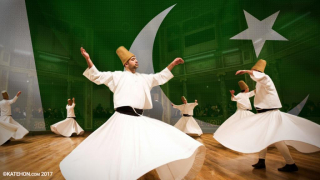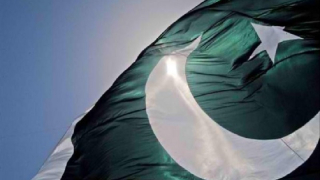1984 Punjab Was The Template For 2019 Kashmir
The draconian controls imposed in contemporary Kashmir and the slow-motion ethnic cleansing taking place there in response to its indigenous people's popular self-determination movement were first pioneered by what India did in Punjab 35 years ago when attempting to suppress the Khalistan movement, and a remembrance of those terrible times could prove informative for predicting what might happen next in Kashmir.
India's unilateral "Israeli"-like moves in Kashmir are being described as unprecedented, and in the administrative-territorial sense, they certainly are because an internationally recognized disputed territory hasn't ever had one of the parties partition the area under their control. That said, the draconian controls imposed in Indian-Occupied Kashmir (IOK) and the slow-motion ethnic cleansing taking place there in response to the indigenous people's popular self-determination movement were actually first pioneered by what India did in Punjab 35 years ago when attempting to suppress the Khalistan movement. What's being referred to here isn't the increasingly well-known "Operation Blue Star" when Indian forces attacked the holiest site of the Sikh religion and slaughtered both separatists and civilians alike who took shelter within that shrine, but the much lesser-known "Operation Woodrose" that took place soon thereafter and terrorized the region's inhabitants through arbitrary arrests and even extrajudicial executions, with these human rights abuses being kept hidden from the world by India's prohibition on independent journalism in that part of the country during those events.
There was one notable exception, however, and that was Brahma Chellaney, a reporter for the Associated Press news agency whose story was referenced in the online Indian information outlet LiveMint's 2014 article about "Operation Blue Star, when the army controlled Indian media". The authors rightly raised awareness about his plight at the time by pointing out how he was charged with "violating Punjab press censorship, two counts of fanning sectarian hatred and trouble, and later with sedition" for accurately reporting on the extrajudicial execution of several Sikhs during "Operation Blue Star" and his conclusion that at least twice as many people were killed during that siege than the government officially admitted. All charges against him were later dropped the year afterwards, but the example that the state made out of him had a chilling effect in deterring other journalists from reporting about the truth of what happened during that attack and the subsequent "Operation Woodrose" that followed. This is very similar to what's happening in modern-day Kashmir where the occupying authorities won't even allow opposition members of the government to visit the region, let alone international journalists.
Just like Kashmiris are nowadays "disappeared" by the government without a trace, so too have Sikhs been experiencing this terror for the past three and a half decades.
The Indian government in both regions selectively targets minorities in order to instill fear within those communities at large, wantonly killing those who are supposedly suspected of harboring separatist sentiments even if some of the victims never had such a thought to begin with. While the state-sponsored violence in Punjab has died down since its climax in the 1990s (which represented the unofficial continuation of the "Operation Woodrose" modus operandi throughout that period), the region is once again at risk of destabilization as the state prepares to crack down more forcefully against all Sikhs as part of its brutal plan to prevent them from participating in the Sikhs For Justice's (SFJ) peaceful Referendum 2020 campaign for an independent Khalistan. Interestingly, whereas in the past it was the rebellion in Punjab that eventually spread to Kashmir (although due to completely different triggers but nevertheless sharing the same commonality of being responses to Indian state oppression), now it might be the one in Kashmir that spreads to Punjab (again, due to different triggers but sharing the same commonality).
A better understanding of these sister struggles can help inform observers about what to expect next, which if the Punjabi case is relied upon as the precedent, then it suggests that the government might turn a blind eye to the spread of narcotics into Kashmir in order to accelerate the slow-motion genocide there.
In addition, it can be expected that the ongoing cultural genocide in Kashmir will speed up just like it did in Punjab against the Sikhs. With no independent journalists allowed in the region to document what's really happening there, the risk is extremely high that many Kashmiris will be killed and their culture put under unprecedented pressure just like what's been happening for years already with the Sikhs. Going a step further with this comparison, any high-profile retaliations by the Kashmiris (whether objectively occurring or false flags) could trigger nationwide pogroms against their diaspora in India and even against Muslims more broadly just like the assassination of Indira Gandhi by two of her Sikh bodyguards led to similar horrific violence being committed against that community at the time. Whatever ends up happening, it shouldn't be forgotten that India's atrocities in Punjab from 1984 onward set the precedent for its current actions in Kashmir, proving that India has always carried out crimes against its non-Hindu minorities regardless of whether Congress or the BJP were in power.
___
DISCLAIMER: The author writes for this publication in a private capacity which is unrepresentative of anyone or any organization except for his own personal views. Nothing written by the author should ever be conflated with the editorial views or official positions of any other media outlet or institution.














